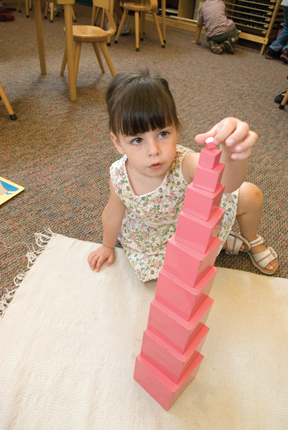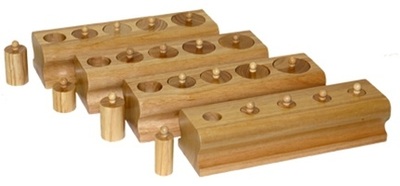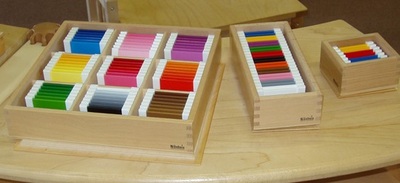- Pedagogical Materials
Every activity has it's place in the classroom and is self-contained and self-correcting. The original didactic materials are specific in design, conforming to exact dimensions, and each activity is designed to focus on a single skill, concept or exercise. All of the material is based on SI units of measurement (for instance, the Pink Tower is based on the 1cm cube) which allows all the materials to together and complement each other, as well as introduce the SI units through concrete example. In addition to this, material is intended for multiple uses at the primary level. A perfect example of this is the "Knobbed Cylinder" materials: not only do they directly offer a sensorial lesson, but indirectly the child's grip on the cylinders paves the way for holding a pencil, and the grades of cylinders allow for an introduction to mathematics.
Other materials are often constructed by the teacher: felt storyboard characters, letter boxes (small containers of objects that all start with the letter) for the language science materials (e.g. Dinosaurs for tracing, etc.), scent or taste activities, and so on. The practical life materials are almost always put together by the teacher. All activities, however, must be neat, clean, attractive and preferably made of natural materials such as glass or wood, rather than plastic. Sponges, brooms and dustpans are provided and any mishaps (including broken glassware) are not punished, but rather treated simply as an opportunity for the children to demonstrate responsibility by cleaning up after themselves.



